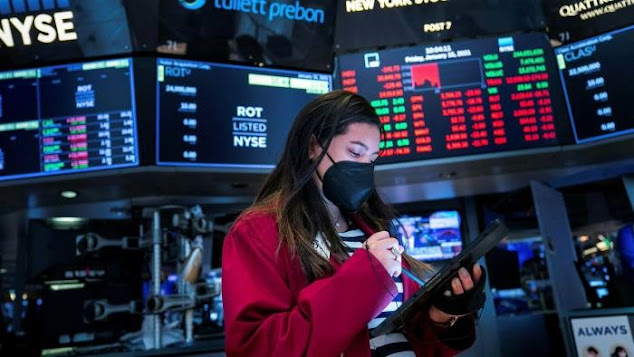How to overcome the uncertainties of the Fed and market psychology
Investors should focus more on individual securities than market-wide trends
Mohamed El-Erian
 It is hard to make confident predictions on current ‘top-down’ factors driving markets as they are not determined by fundamentals, history or market maths © AP
It is hard to make confident predictions on current ‘top-down’ factors driving markets as they are not determined by fundamentals, history or market maths © APA healthy pause that refreshes or a warning sign of a much more consequential dip down the road?
This is the question on investors’ minds as markets recover from an early-year dip in which portfolios lost money on both stocks and government bonds that are usually seen as “risk-free”.
The answer is unusually complex, involving uncertainties over the “top down” view of central bank policy and market psychology.
Fortunately, there is greater clarity on “bottom-up” factors that drive the selection of individual investments.
In a volatile start for 2021, the previously high-flying Nasdaq lost more than 10 per cent between February 12 and March 8 before bouncing back sharply.
In the process, it underperformed the Dow Jones Industrial Average by an eye-popping 12 percentage points. The prices of government bonds — which move in the opposite direction to those of stocks — also fell, adding to investors’ woes.
For many, these moves were due to changing US economic prospects.
These were highlighted by stronger-than-expected data for jobs, personal income and manufacturing activity — all before the economy feels the impact of a $1.9tn fiscal package involving fast cash disbursements to Americans.
No wonder the OECD revised up its 2021 growth projection to 6.5 per cent, an unusual intra-year increase of 3.3 percentage points.
Inflation projections are also going higher.
It is increasingly likely that US growth in prices will exceed both the current consensus of market expectations and the Federal Reserve’s central target as the supply of goods and services struggles to keep up with soaring private and public demand.
Indeed, there is already evidence of supply bottlenecks.
Yet this economic improvement does not in itself shed much light on the recent market volatility.
If anything, high and durable growth is needed to validate elevated asset prices.
The underlying driver of this year’s uncomfortable market action is concern that the beneficial effects of such an economic regime change would break the dominant factor that has ruled markets for a while — ample and predictable liquidity.
One of two things would need to materialise for this concern to become reality.
First, that the Fed starts walking back from its extremely stimulative policies.
Yet, while not impossible, top Fed officials are yet to show any inclination to contemplate this, let alone embark on it.
This is not because they are blind to the improving economy and massive fiscal stimulus. It is because they are worried that a tightening of financial conditions would destabilise markets and undermine the recovery.
Second, that due to changing market conditions, even if the Fed were to maintain its current policy approach, the impact on markets goes from being beneficial to problematic. On several occasions this year, guidance that monetary policy will remain extremely loose has tended to push yields on longer-term government bonds higher rather than lower.
Influential voices in markets worry that the combination of such ultra-loose fiscal and monetary policies will unanchor inflationary expectations. They argue this could force an unwinding of market positions for which the Fed has no good policy response.
Fortunately for markets as a whole, such worries have been tempered for now by stabilising inflows into bond markets from abroad because US rates are more attractive than the debt of many major markets and because investors are seeking to match future liabilities with predictable interest income.
Still, it is hard to make confident predictions on current top-down factors driving markets as they are not determined by fundamentals, history or market maths. One needs to predict the mindset of Fed officials who currently seem stuck in an “active inertia” mode — that is, recognising that conditions are changing yet continuing on the same path.
Additionally, the psychology of markets is changing due to technology and the greater involvement of retail investors.
Despite this, I believe it is still possible for investors to build higher confidence in their portfolios using careful bottom-up selection on individual securities.
These securities should be screened for robustness in four areas: strength of balance sheets, positioning in the faster growing parts of the global landscape, a presence in sectors that are not vulnerable to lasting Covid-19 disruptions and solid management teams.
While such a portfolio would not be immune from liquidity-related volatility, it would provide investors greater protection should this year’s uncomfortable moments turn out to be a harbinger of something nastier down the road.
0 comments:
Publicar un comentario